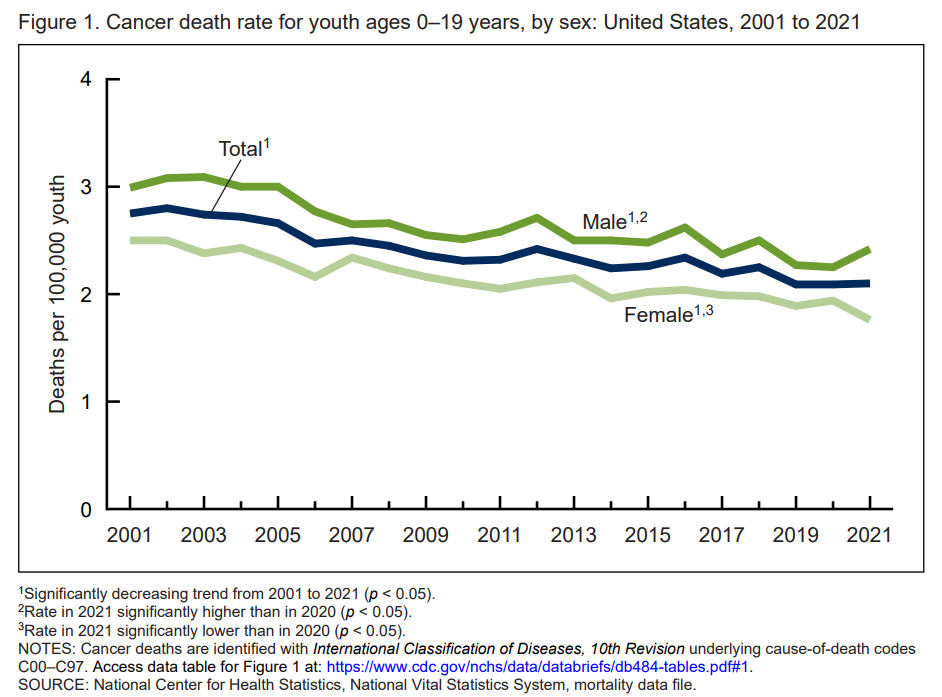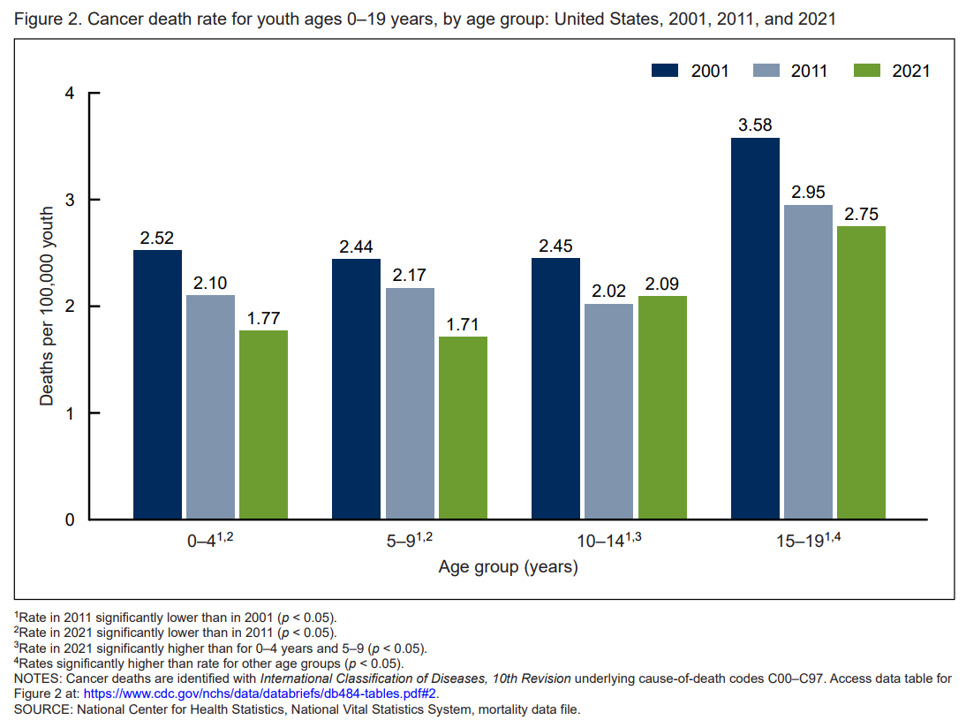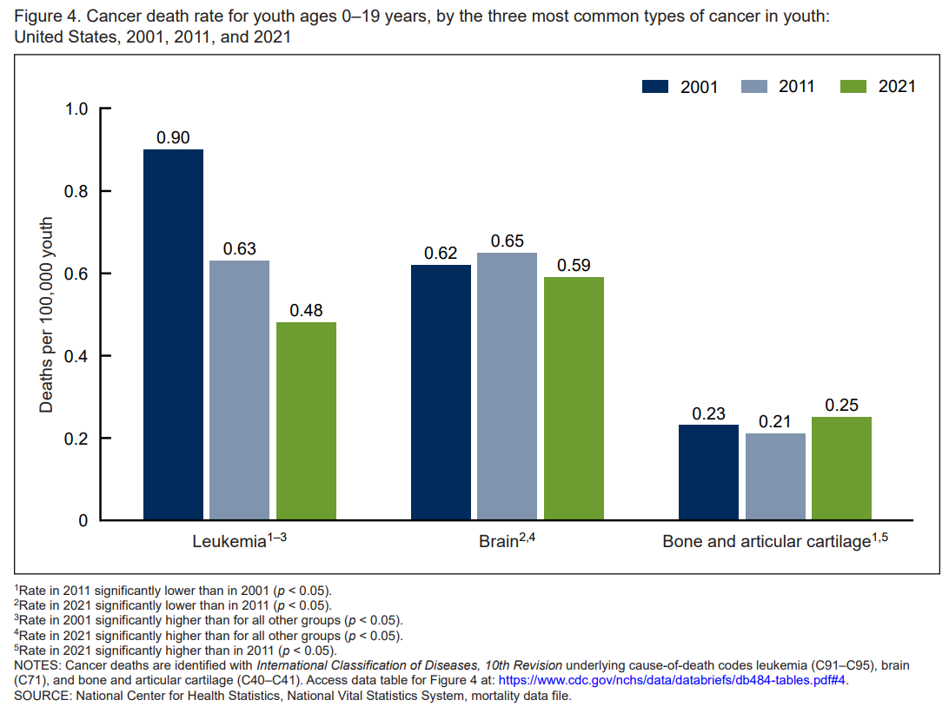That is the finding from a CDC report released this month. Mortality rates fell by 24% between 2001 and 2021. Specifically, the cancer death rate for youth ages 0–19 years was 2.75 per 100,000 in 2001, but decrease to 2.10 per 100,000 in 2021.
The analysis uses data including (i) cause of death data from National Center for Health Statistics 1999–2020, and (ii) population information from the US Census, , Some key figures and a more detailed summary are below.



Cancer mortality in youth continued to decline during 2001–2021, building on progress of the previous 3 decades (1–4). The overall cancer death rate declined by one-fourth during 2001–2021, with a greater percentage decline for females (30%) than males (19%). All 5-year age groups experienced declines from 2001 to 2011, but only the younger age groups (0–4 and 5–9 years) experienced significant declines from 2011 to 2021. White, Black, and Hispanic youth had similar cancer death rates in 2001 and 2011. However, the rate for White youth continued to decline from 2011 to 2021, while rates for Black and Hispanic youth remained stable. As such, in 2021, the rate for White youth was significantly lower than for Black and Hispanic youth. Leukemia had been the most common type of cancer causing death in youth in 2001 but declined by 47% over the period. Despite an 11% decline in the second half of the period, brain cancer was the leading type of cancer causing death in youth in 2021. Death rates due to bone and articular cancer increased from 2011 to 2021.
Unfortunately, the report does not go into the causes of this decline.